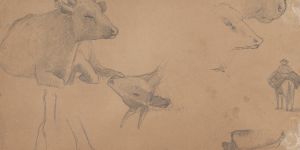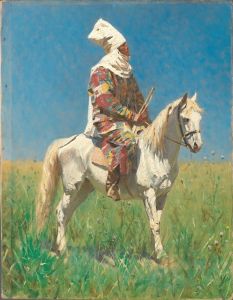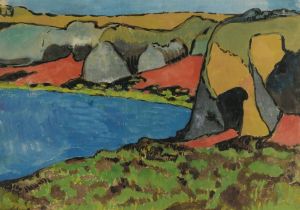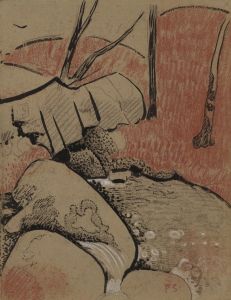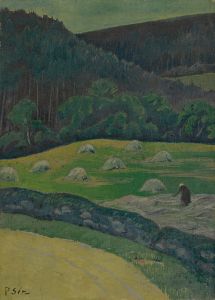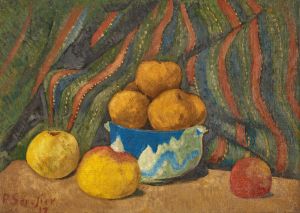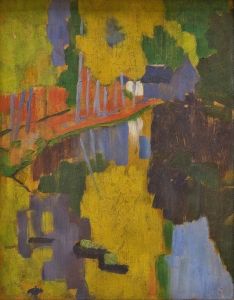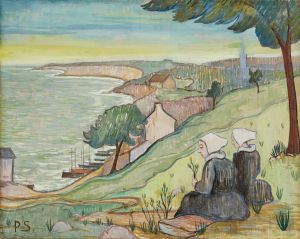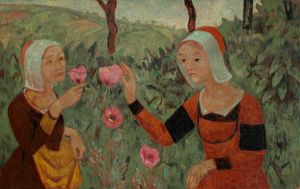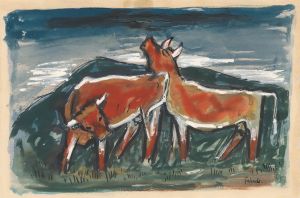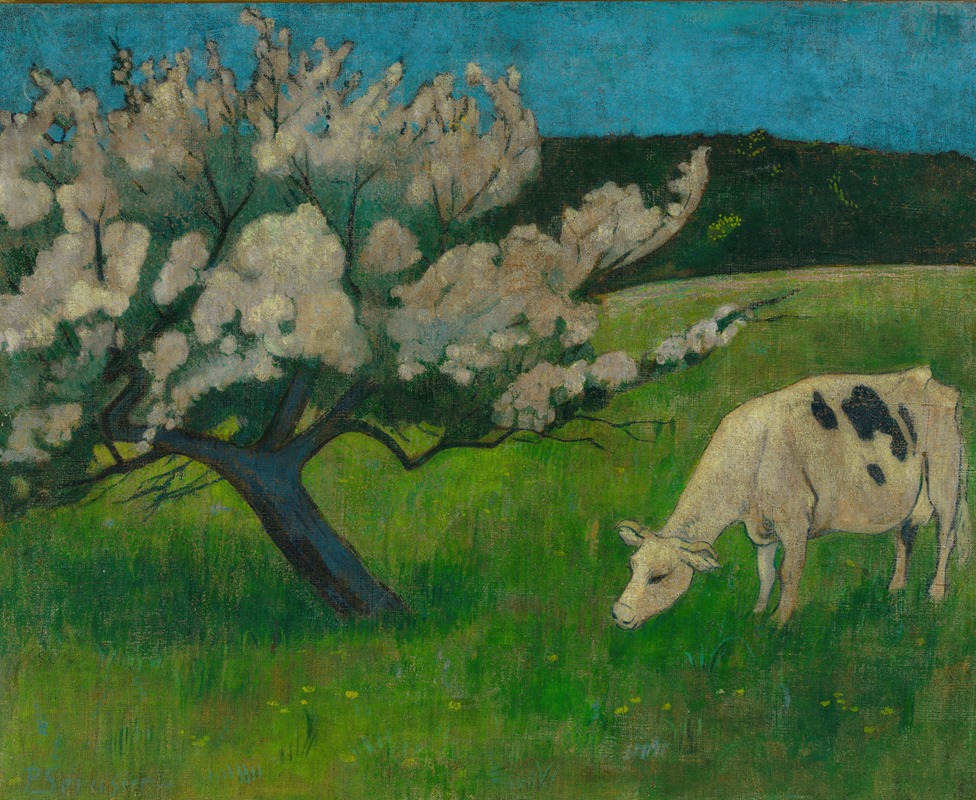
White cow
A hand-painted replica of Paul Sérusier’s masterpiece White cow, meticulously crafted by professional artists to capture the true essence of the original. Each piece is created with museum-quality canvas and rare mineral pigments, carefully painted by experienced artists with delicate brushstrokes and rich, layered colors to perfectly recreate the texture of the original artwork. Unlike machine-printed reproductions, this hand-painted version brings the painting to life, infused with the artist’s emotions and skill in every stroke. Whether for personal collection or home decoration, it instantly elevates the artistic atmosphere of any space.
Paul Sérusier's painting White Cow is a work created by the French Post-Impressionist artist, who was a key figure in the Symbolist and Nabis movements. Sérusier, born in 1864, was known for his innovative approach to color and form, influenced by his interactions with Paul Gauguin and his time in Pont-Aven, a hub for avant-garde artists in the late 19th century.
White Cow reflects Sérusier's interest in simplifying forms and using bold, flat areas of color, a hallmark of the Nabis group. The painting depicts a white cow, a subject that aligns with the rural and pastoral themes often explored by Sérusier and his contemporaries. These themes were inspired by the natural landscapes and traditional life of Brittany, where Sérusier frequently worked. The cow is rendered with a focus on its essential shapes and colors, rather than realistic detail, demonstrating Sérusier's departure from naturalism and his embrace of a more symbolic and decorative style.
The painting also highlights Sérusier's use of color theory, which he developed under the influence of Gauguin. Sérusier believed that color should not merely replicate reality but should instead evoke emotion and convey meaning. In White Cow, the choice of a white animal against a contrasting background may serve to draw the viewer's attention to the purity and simplicity of the subject, though the exact intent remains open to interpretation.
While specific details about the creation date and current location of White Cow are not widely documented, the work is representative of Sérusier's broader artistic philosophy and his contributions to the development of modern art. His emphasis on abstraction and the expressive potential of color had a lasting impact on the Nabis group and on subsequent movements in 20th-century art.
As with many of Sérusier's works, White Cow invites viewers to appreciate the harmony of composition and the emotional resonance of color, rather than focusing solely on narrative or representational accuracy. This approach underscores Sérusier's role as a pioneer in the transition from Impressionism to more abstract and symbolic forms of artistic expression.






